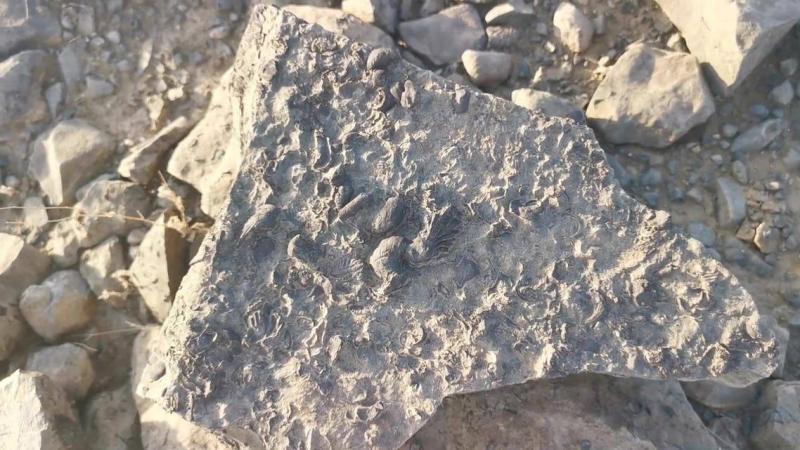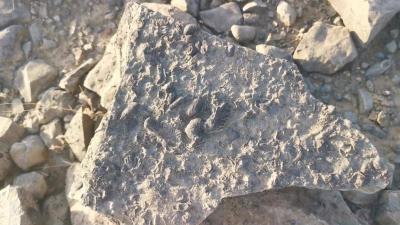Saudi citizen Ibrahim Mashrqee never expected that his small outing in one of Jazan's locations in the southwest of the Kingdom would end with him finding a treasure. He discovered a large area of marine fossils, dating back millions of years, located several kilometers away from the sea in a mountainous area surrounded by the Sarawat Mountains. He explained to "Al Arabiya.net" that "this discovery came during what he might call a geological outing, during which he found marine organisms in a mountainous area and in large quantities, making it intriguing and impressive to him. This led him to directly contact the Saudi Geological Survey, which visited the site shortly after."
**Jurassic Era**
He added that specialists from the Geological Survey conducted research and exploration at the site, confirming that it dates back to approximately 140 to 180 million years ago, known as the Jurassic period. He noted that during their visit to the site, they also explored the Al-Qahr Mountains in the Rayth Governorate, but returned to the site due to its richness in fossils, witnessing amazing discoveries over an area estimated to be between 20 and 25 kilometers.
Furthermore, he indicated that among the fossils found were various types of shells, in addition to sea lilies, starfish, sea urchins, and some marine organisms whose types have not yet been identified by specialists from the Geological Survey.
**Natural Museum**
He pointed out that the site is surrounded on the northern and southern sides by mining operations. To the south, there is a cement factory, and to the north, there are several quarries and mining pits, which have negatively impacted the site and led to the destruction of the fossils. He called on the relevant authorities to take care of the site because it is rich and full of marine fossils, suggesting that it could be transformed into an open natural museum or that these fossils could be relocated to a dedicated or closed museum for the benefit of researchers in this field.




